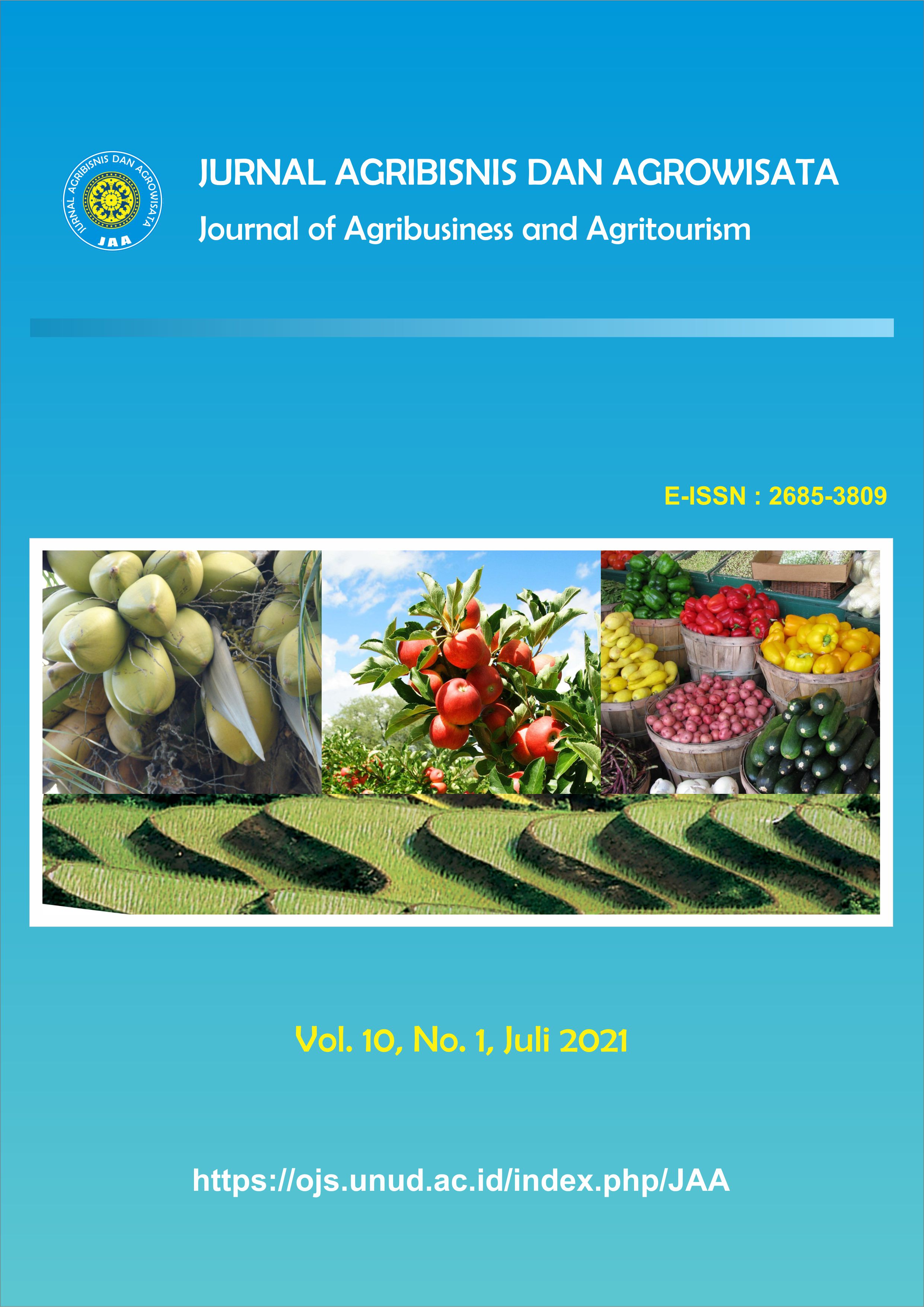Peran Modal Sosial Dalam Upaya Pelestarian Subak di Tengah Perkotaan (Kasus Subak Intaran Barat di Desa Sanur Kauh, Kecamatan Denpasar Selatan, Kota Denpasar)
Abstract
The Role of Social Capital in the Urban Subak Conservation Efforts (A Case Study of Subak Intaran Barat in Sanur Kauh Village, South Denpasar Sub-District, Denpasar City)
Subak Intaran Barat is a water control system of subak located in Denpasar City. Generally, urban subaks experience a greater threat than rural subaks. Every year, Subak Intaran Barat experiences land conversion of around 1 to 3 hectares. Once endorsed by the government as a sustainable subak in 2016, it reduced the amount of land conversion, but it still occurs in small amounts. The purpose of this study is to determine the efforts of preservation of Subak Intaran Barat both from internal subaks through social capital, and externally, namely the role of government, and other parties. The research location was chosen purposively because it is one of the sustainable subaks, which is located in Sanur Kauh Village, South Denpasar Sub-District, Denpasar City. The analytical method used is descriptive qualitative by using in-depth interviews with key informants. The results of this study indicate that Subak Intaran Barat has strong social capital, this can be seen in: (1) Farmers trust each other, farmers trust the management of subak and government programs, and religious ceremonies. (2) Subak norms and values are obeyed by all members of the subak, except for the awig-awig traditional rules regarding land conversion. (3) The social network between subak and Perbekel adat or chief of the village and the government is running well. The role of government is through the provision of agricultural subsidies, guidance, agricultural extension, infrastructure maintenance, and road construction to facilitate farmers' access to farming. The advice that can be given is that the government needs to apply stricter sanctions regarding land conversion, and subak members should be aware of not doing land conversion.
Downloads
References
Arikunto, Suharsimi. 2002. Prosedur Penelitian, Suatu Pendekatan Praktek. PT. Rineka Cipta. Jakarta.
Budiastuti, Putu. 2015. Upaya Pelestarian Subak di Perkotaan. Skripsi. Fakultas Pertanian Universitas Udayana.
Field, John. 2009. Modal Sosial. Kreasi Wacana, Yogyakarta.
Kusuma. 2017. Peran Modal Sosial Dalam Melestarikan Subak Bukti Badan Badung. Skripsi, Fakultas Pertanian Universitas Udayana
Pitana, I Gde. 1993. Subak, Sistem Irigasi Tradisional di Bali (Sebuah Deskripsi Umum) dalam Pitana, I Gde (Editor). 2005. Revitalisasi Subak Dalam Memasuki Era Globalisasi. Yogyakarta: Penerbit Andi
Sudarta, Wayan dan I Putu Dharma. 2013. Memperkuat Subak Anggabaya dari Segi Kelembagaan. Laporan Pengabdian Masyarakat. Kerjasama Dinas Kebudayaan Kota Denpasar dengan Program Ekstensi Fakultas Pertanian UNUD.
Sugiyono. 2016. Memahami Penelitian Kualitatif. Alfabeta, Bandung
Sutopo. 2006. Metodologi Penelitian Kualitatif. Surakarta. UNS.
Windia, Wayan. 2006. Transformasi Sistem Irigasi Subak yang Berlandaskan Konsep Tri Hita Karana. Pustaka Bali Post.
Windia dan Artha Wiguna. Subak Warisan Budaya Dunia. Udayana University Pers
Yolanda Holle, 2015. Modal Sosial Suku Marind Dalam Pengembangan Padi Sawah Di Kabupaten Merauke Provinsi Papua. Desertasi. Fakultas Pertanian Universitas Udayana







